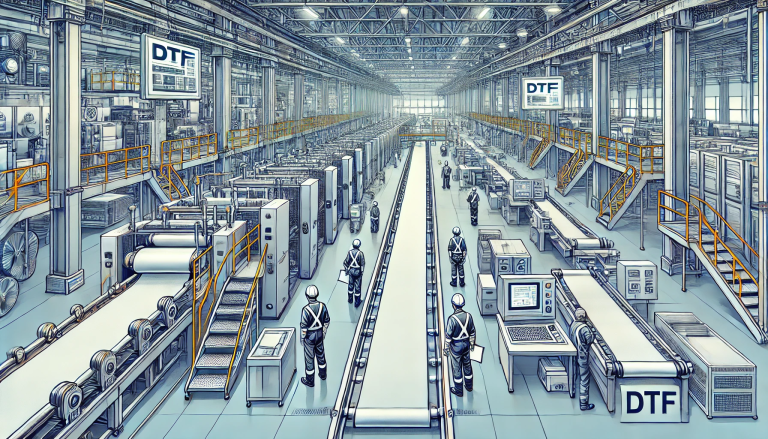“Innovations in Print: The Power and Potential of Direct-to-Film UV Printing” -MAXDTF- Transfer DTF UV Paper Wholesale, UV Film Transfer Decal Manufacturer, Made in China
Introduction
In the ever-evolving world of printing technology, it’s crucial to stay abreast of the latest innovations to ensure efficient, quality outputs for your projects. One of these cutting-edge technologies is Direct-to-Film (DTF) UV printing, a technique that is fast revolutionizing the printing industry. This blog post aims to delve into the world of DTF UV printing, demystifying its components, processes, benefits, applications, and its future trajectory.
Part 1: Understanding Direct-to-Film UV Printing
DTF UV printing is an innovative digital printing method that combines the best aspects of direct-to-substrate and transfer film printing. It involves printing directly onto a special transfer film before applying the design to the desired substrate using heat and pressure.
UV-curable inks are used in this process, which harden almost instantly when exposed to ultraviolet (UV) light. This ensures that the inks don’t have time to soak into the substrate, resulting in incredibly vibrant and highly detailed prints.
This novel technology not only expands the range of printable materials but also provides a cost-effective solution for small batch production and customization of products.
Part 2: The Direct-to-Film UV Printing Process
The DTF UV printing process is a combination of precision, technology, and chemistry. It typically involves the following steps:
- Design Preparation: The design is prepared digitally, ensuring the colors and elements are ready for printing.
- Printing: The prepared design is then printed directly onto a specially-coated film using UV-curable inks. These inks are cured almost immediately under UV light, which prevents spreading and preserves the fine details of the design.
- Transfer: Once printed and cured, the design on the film is transferred onto the substrate – this could be anything from textiles and plastics to wood and metal. The transfer is performed using heat and pressure, adhering the design to the substrate and creating a lasting bond.
- Curing (Post-Transfer): After the transfer, the print may undergo a final curing process to ensure maximum durability, depending on the substrate material.
Part 3: The Benefits of Direct-to-Film UV Printing
Direct-to-Film UV printing comes with a host of benefits that set it apart from traditional printing methods.
- Versatility: DTF UV printing can be used on a wide variety of substrates, including materials that are typically difficult to print on, such as dark-colored textiles, glass, and metal.
- Durability: The UV-curable inks used in DTF UV printing are highly resistant to fading, wear, and environmental factors, making the final prints incredibly durable.
- Speed and Efficiency: Because the UV inks cure almost instantly, the printing process is considerably faster than other methods. This quick turnaround time makes DTF UV printing a highly efficient option for projects with tight deadlines.
- Environmental Friendliness: DTF UV printing uses fewer resources, reduces waste, and has less environmental impact compared to traditional printing methods.
Part 4: Applications of Direct-to-Film UV Printing
DTF UV printing is a game-changer in various industries. In the world of fashion, it allows designers to easily create custom prints on fabrics, leading to a surge in personalized clothing and accessories. In interior design, it opens up new possibilities for customization of wallpapers, tiles, glass, and other decor materials.
Moreover, product manufacturers and packaging companies are using DTF UV printing to create unique, high-quality branding elements. Even artists and photographers are utilizing this technology to produce stunning prints with intricate details and exceptional durability.
Part 5: The Future of Direct-to-Film UV Printing
Looking ahead, the future of DTF UV printing is promising. As the demand for customization and small batch production continues to grow across industries, so will the adoption of this technology. Additionally, advancements in UV-curable inks and transfer films are expected to further enhance the capabilities of DTF UV printing.
Moreover, with an increasing focus on sustainability, the environmental benefits of DTF UV printing will likely drive its wider adoption. This innovative technology could soon become a mainstay in the printing industry, reshaping the way we print and transfer designs onto various substrates.
Conclusion
Direct-to-Film UV printing is undoubtedly one of the most exciting advancements in the world of printing. Its versatility, efficiency, and environmental benefits make it a perfect fit for our increasingly customizable and eco-conscious world. Whether you’re in fashion, interior design, manufacturing, or arts, harnessing the power of DTF UV printing can unlock new levels of creativity and productivity in your projects. Welcome to the future of printing!
Stay tuned to our blog for more insights into the world of print technology, as we continue to explore the innovations shaping our industry.



